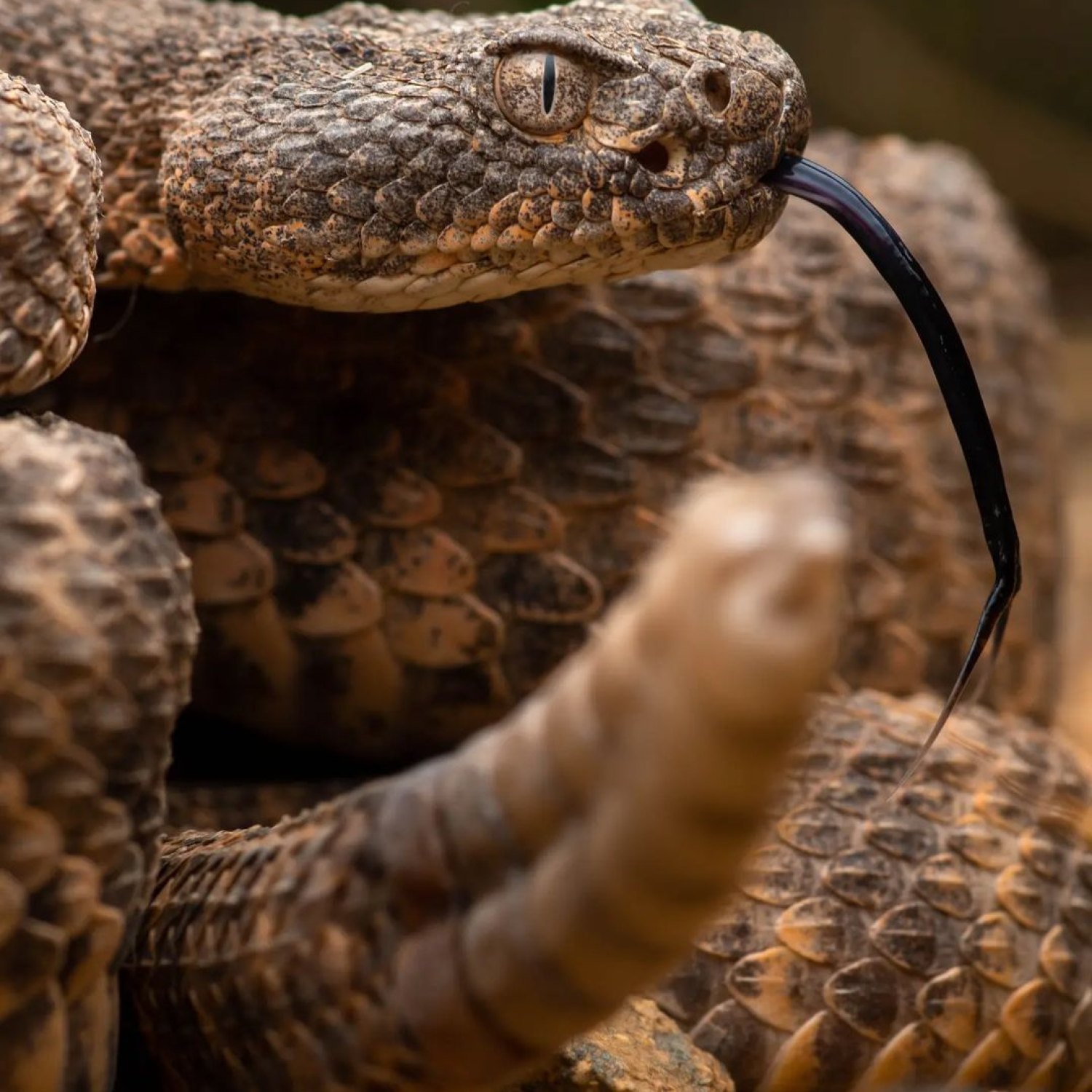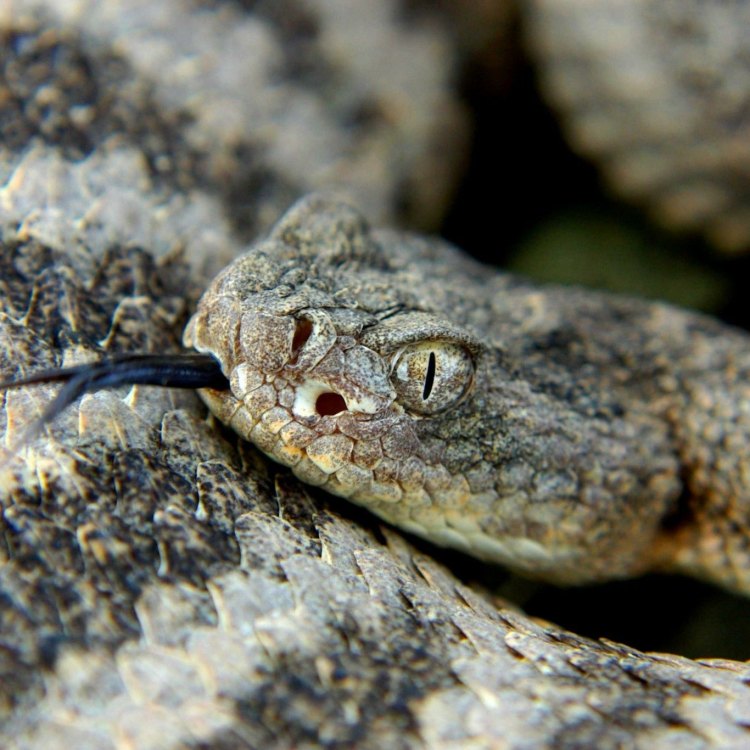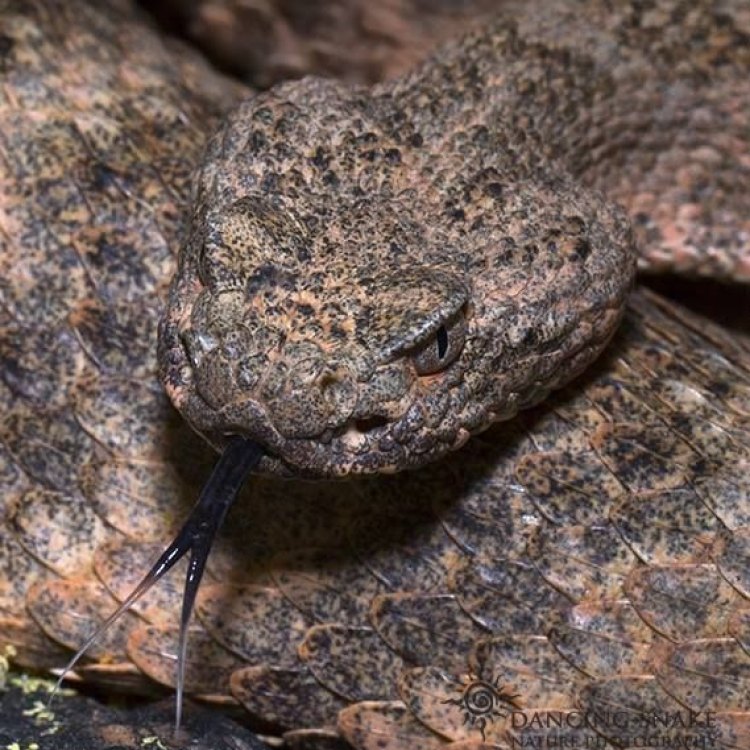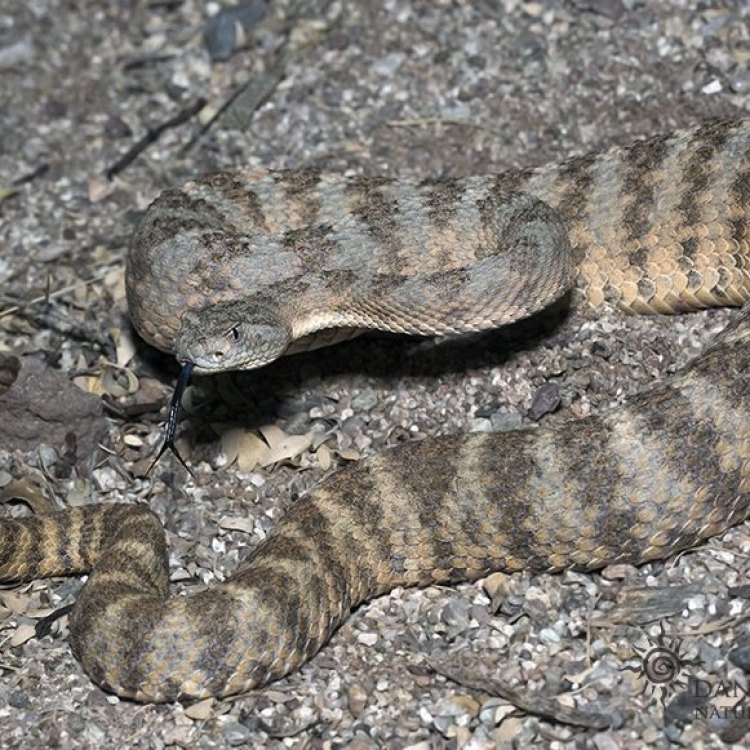
Tiger Rattlesnake
2-4 feet
Did you know that the Rattlesnake is a venomous reptile with a distinctive rattle at the end of its tail? This unique tail serves as a warning to potential predators. Found in the Southwestern US and Mexico, these 2-4 feet long creatures belong to the Viperidae family and have a stocky body with a triangular-shaped head. Fascinating, isn't it?
Animal Details Summary:
Common Name: Tiger Rattlesnake
Kingdom: Animalia
Habitat: Grasslands, deserts, rocky slopes
The Fierce and Fascinating Tiger Rattlesnake
Do you ever wonder about the unique and diverse creatures that inhabit our planet? With over 8.7 million species, there are so many fascinating animals to explore and learn about. One such creature is the tiger rattlesnake, scientifically known as Crotalus tigris. Let's dive into the world of this strikingly beautiful and deadly reptile Tiger Rattlesnake.A Name That Demands Attention
The tiger rattlesnake gets its name from its distinctive black and yellow banding, which resembles the stripes of a tiger. These bands, along with its rattling tail, make it one of the most easily identifiable rattlesnake species. The scientific name, Crotalus tigris, also reflects its tiger-like appearance, with "crotalus" meaning "rattle" and "tigris" meaning "tiger" in Latin.Classification and Distribution
Just like all living organisms, the tiger rattlesnake has a unique classification. It belongs to the kingdom Animalia, phylum Chordata, class Reptilia, and order Squamata. The Squamata order includes lizards, snakes, and amphisbaenians, and the tiger rattlesnake specifically belongs to the family Viperidae, which includes about 340 different species of venomous snakes.The tiger rattlesnake is mainly found in the southwestern United States and northern Mexico. Its habitat consists of grasslands, deserts, and rocky slopes. These regions provide the perfect environment for this cold-blooded reptile to thrive Terrier. The tiger rattlesnake often hides under rocks, logs, or in burrows to escape the scorching desert heat.
A Deadly Diet
The tiger rattlesnake is a carnivore and primarily feeds on small mammals such as rodents, lizards, and birds. It uses its venom to immobilize its prey, making it easier to swallow. Like all snakes, the tiger rattlesnake has a unique way of consuming its food. Its flexible jaws allow it to expand and swallow prey much larger than its head. This efficient feeding method makes it a top predator in its ecosystem.However, the tiger rattlesnake also has natural predators, such as hawks, eagles, and other large birds of prey. These hunters have developed immunity to snake venom and are not affected by it. In addition, the tiger rattlesnake also faces threats from habitat destruction and human persecution.
Appearance and Physical Characteristics
The tiger rattlesnake has a stocky body and can grow between 2 to 4 feet in length. Its body is covered in scales, which help protect it from its harsh surroundings. It has a triangular-shaped head, which houses its venom glands and sharp, hollow fangs.These fangs are used to inject venom into their prey or attackers. Unlike other reptiles, the tiger rattlesnake does not have a vivid coloration. Instead, its black and yellow banding acts as camouflage, helping it blend into its surroundings and remain undetected by predators.
A Deadly Defense Mechanism
The most distinct feature of the tiger rattlesnake is its rattle. This unique tail appendage is made up of loosely attached keratin pieces, which produce a rattling sound when shaken. This sound acts as a warning to potential predators, giving them an opportunity to retreat before getting too close.In addition to its rattle, the tiger rattlesnake also has venomous abilities, making it one of the most feared and deadly snakes in its habitat. Its venom is a complex cocktail of enzymes and proteins that helps it immobilize its prey or defend itself against predators. Without proper medical treatment, a bite from a tiger rattlesnake can be fatal to humans.
Threats and Conservation
Despite its fearsome reputation, the tiger rattlesnake is not an aggressive species and will typically only attack when threatened. However, it often falls victim to human fear and persecution. Many people see snakes as dangerous and will kill them on sight, leading to a decline in their population.In addition, the tiger rattlesnake is also threatened by habitat destruction due to urbanization, road construction, and land development. As a result, its numbers are decreasing, and it is currently listed as a species of least concern by the International Union for Conservation of Nature (IUCN).
Preserving the Population for Future Generations
As with all wildlife, it is essential to conserve and protect the tiger rattlesnake for future generations. One way to achieve this is through education and awareness. By learning about these spectacular creatures, we can better understand and appreciate their role in our ecosystem.Furthermore, it is crucial to avoid harming or killing these snakes and instead, take a cautious and respectful approach when encountering them. If you live in an area where the tiger rattlesnake is prevalent, it is essential to take precautions, such as wearing protective clothing and keeping yards free of potential hiding spots, to minimize any negative interactions.
To support the conservation efforts for the tiger rattlesnake and other wildlife, you can also donate to organizations that focus on preserving and protecting their habitats.
The Hidden World of the Tiger Rattlesnake
In conclusion, the tiger rattlesnake is a fascinating and crucial part of our ecosystem. Its unique appearance, defensive mechanisms, and venomous abilities make it one of the most captivating and feared reptiles in the southwestern United States and northern Mexico.However, it is important to remember that the tiger rattlesnake is just as vulnerable and deserving of protection as any other animal. By understanding and respecting its role in nature, we can help ensure its survival for generations to come. So, the next time you come across a tiger rattlesnake, take a moment to appreciate its beauty and importance in our natural world.

Tiger Rattlesnake
Animal Details Tiger Rattlesnake - Scientific Name: Crotalus tigris
- Category: Animals T
- Scientific Name: Crotalus tigris
- Common Name: Tiger Rattlesnake
- Kingdom: Animalia
- Phylum: Chordata
- Class: Reptilia
- Order: Squamata
- Family: Viperidae
- Habitat: Grasslands, deserts, rocky slopes
- Feeding Method: Carnivorous
- Geographical Distribution: Southwestern United States and northern Mexico
- Country of Origin: United States, Mexico
- Location: Southwestern United States and northern Mexico
- Animal Coloration: Distinctive black and yellow banding
- Body Shape: Stocky body with a triangular-shaped head
- Length: 2-4 feet

Tiger Rattlesnake
- Adult Size: 2-4 feet
- Average Lifespan: 10-20 years
- Reproduction: Sexual
- Reproductive Behavior: Viviparous (giving birth to live young)
- Sound or Call: Rattlesnake rattle sound
- Migration Pattern: Non-migratory
- Social Groups: Solitary
- Behavior: Nocturnal and ambush predator
- Threats: Habitat loss and fragmentation, illegal collection for the pet trade, persecution by humans
- Conservation Status: Least Concern
- Impact on Ecosystem: Apex predator, helps control rodent populations
- Human Use: None
- Distinctive Features: Distinctive black and yellow banding, venomous fangs, rattles on tail
- Interesting Facts: The Tiger Rattlesnake is known for its unique and striking coloration, which resembles that of a tiger. It is one of the most venomous snakes in its range. Despite its venomous nature, it is not considered a significant threat to humans due to its relatively small size and shy behavior.
- Predator: Birds of prey, larger mammals

Crotalus tigris
The Striking Tiger Rattlesnake: A Fierce and Fascinating Predator of the Americas
The Tiger Rattlesnake, also known as Crotalus tigris, is a true testament to the captivating beauty and ferocious nature of the animal kingdom. Native to the southwestern regions of the United States and Mexico, this striking serpent is a species of venomous pit viper. In this article, we will dive into the unique features and behaviors of the Tiger Rattlesnake, their role in the ecosystem, and the threats they face in the wild.Distinctive Features
As the name suggests, the Tiger Rattlesnake is easily recognizable by its distinctive black and yellow banding, resembling the stripes of a tiger PeaceOfAnimals.Com. This coloration serves as a warning to potential predators, indicating its venomous nature. However, this species' appearance can vary depending on its location, with some individuals displaying a more subdued grey and brown pattern.Aside from its coloration, the Tiger Rattlesnake is also known for its venomous fangs and the rattles on its tail. These rattles, made from keratin, are a unique feature among snakes and are used as a warning signal when the snake feels threatened. As the snake sheds its skin, a new segment is added to the rattle, making the sound louder and more menacing. This iconic rattle has been the subject of myths and legends for centuries, adding to the mystique and fear surrounding this species.
Adult Size and Lifespan
On average, Tiger Rattlesnakes reach a length of 2-4 feet, with the females being larger than males. However, some individuals have been recorded to grow up to 6 feet in length. These snakes have a lifespan of 10-20 years in the wild, with some individuals living up to 30 years in captivity Tawny Mining Bee.Reproduction and Behavior
The Tiger Rattlesnake engages in sexual reproduction and is viviparous, meaning they give birth to live young. The males compete for female attention and will engage in ritual combat to determine the dominant male. After mating, the females will carry the fertilized eggs inside them until they are ready to give birth. This unique method of reproduction allows for increased survival rates for the offspring.During the day, the Tiger Rattlesnake is mostly inactive, hiding in underground burrows or brush piles to avoid the scorching sun. However, they become active at night, feeding on a variety of prey such as rodents, lizards, and small mammals. As ambush predators, they rely on their potent venom to immobilize their prey, using their heat-sensing pits to locate their targets. Unlike some other rattlesnake species, the Tiger Rattlesnake is not known to engage in communal basking or hunting, preferring to lead solitary lives.
Threats and Conservation Status
The Tiger Rattlesnake is classified as a species of Least Concern by the International Union for Conservation of Nature (IUCN). However, like most wildlife, this species faces threats that could impact its survival in the future. Habitat loss and fragmentation due to urbanization, agriculture, and development projects are major concerns for the Tiger Rattlesnake. These activities not only destroy the snake's natural habitat but also limit their ability to move between different habitats, making it challenging for them to find suitable prey and mates.Another significant threat facing the Tiger Rattlesnake is illegal collection for the pet trade. While these snakes may seem like fascinating pets to some, their venomous nature and specific habitat requirements make them challenging to care for in captivity. This practice also significantly impacts wild populations, as many of the collected individuals do not survive the journey and environment change.
Unfortunately, the Tiger Rattlesnake also faces persecution by humans, often killed out of fear or misunderstanding. Despite their venomous bite, these snakes are not considered a significant threat to humans. They are shy and will usually try to avoid confrontation, only resorting to a defensive bite if they feel threatened. Education and awareness are essential in mitigating this threat and promoting the conservation of this beautiful species.
Impact on Ecosystem
The Tiger Rattlesnake plays a crucial role in its ecosystem as an apex predator. By keeping the population of rodents and other small mammals in check, they help maintain the balance of the food chain. Without their presence, these prey species could become overpopulated, leading to negative impacts on vegetation and other wildlife.The potential decline or extinction of the Tiger Rattlesnake could also have adverse effects on the ecosystem's overall health. Snakes, in general, play important roles in nutrient cycling and energy flow, making them vital contributors to ecosystem functioning.
Interesting Facts
Aside from their distinctive appearance and behaviors, the Tiger Rattlesnake has many intriguing characteristics that make them a fascinating species. Here are a few interesting facts about this striking serpent:- The Tiger Rattlesnake is one of the most venomous snakes in its range, with its venom being neurotoxic, hemotoxic, and cytotoxic. This potent combination can cause paralysis, tissue damage, and even death in prey animals.
- They are primarily found in rocky, arid habitats, such as deserts and grasslands.
- The Tiger Rattlesnake has been given many different names, including Arizona Black Rattlesnake, Sonora Black Rattlesnake, and Mexican Black Rattlesnake.
- These snakes have the ability to vibrate their tails without making a rattling sound, allowing them to ambush prey without giving away their location.
- Deer mice make up a significant part of their diet, and their venom has been found to be specifically adapted to target and neutralize the mouse's defenses.
Predators and Human Use
Despite being a venomous species, the Tiger Rattlesnake has predators of its own. Birds of prey, such as hawks and eagles, are known to prey on these snakes, as well as larger mammals like coyotes and foxes.While there is no known human use of the Tiger Rattlesnake, their venom has been used in research and medicine to develop antivenoms and study its potential medical benefits. However, due to its small size, venom yield from this species is limited, making its use in this area challenging.
In Conclusion, the Tiger Rattlesnake is a symbol of strength and resilience, with its striking appearance and unique behaviors capturing the imagination of many. As an essential part of the ecosystems it inhabits, it is crucial that we continue to promote their conservation and address the threats facing this species. Through education, awareness, and responsible actions, we can ensure that the Tiger Rattlesnake, along with all other wildlife, continues to thrive and fascinate future generations.

The Fierce and Fascinating Tiger Rattlesnake
Disclaimer: The content provided is for informational purposes only. We cannot guarantee the accuracy of the information on this page 100%. All information provided here may change without prior notice.












